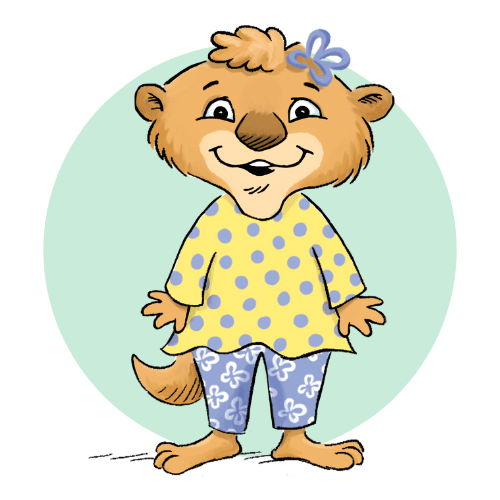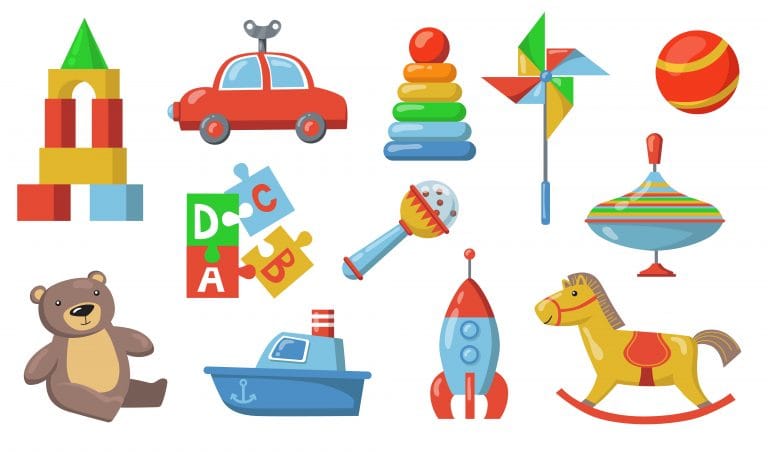- Toddler
Dinosaur or Not?
Learning Areas:
- Math
- Movement
- Technology

Overview
What is this activity?

ECSEL Standards
What skills are being enhanced? What knowledge is gained?

Materials
What do you need to prepare for this activity?


Instructions
Step by step guide

ECSEL Prompts
What questions can you ask to promote ECSEL thinking and discussions?

Extended Learning
How can you extend children’s thinking?
Overview
Sort various dinosaur and non-dinosaur toys and manipulatives into categories to answer the question, “Dinosaur or Not?”

ECSEL Standards & Learning Goals
What skills are being enhanced & what knowledge is being gained through this activity?
Emotional Identification
Children will begin to recognize and identify the four basic emotions (happy, sad, angry, and scared) with teacher support as they arise while searching for objects and while waiting their turn to sort them.
Cause & Effect
Children will begin to associate the four basic emotions with causes. Teachers will provide examples of simple causes for each emotion while children participate in the scavenger hunt and sorting activity.
Empathy & Prosocial Skills
Children will work as a team to find hidden dinosaur and non-dinosaur objects. They will also practice waiting their turn during the sorting portion of this activity.
Problem Solving
Children will think critically about whether objects should be categorized as dinosaurs, or not. Teachers will also support children in working through social problems that arise while collaborating.
CASEL Standards
Self-Awareness, Social Awareness, Relationship Skills, Responsible Decision Making
Materials
- A collection of age-appropriate dinosaur and Jurassic Period toys (e.g., different types of dinosaurs, fossils, etc.)
- A collection of other classroom toys (e.g., different animals, dramatic play foods, dolls, etc.)
- 1 piece of poster board
- Marker (teacher use only)
- Device for taking photos
- A printed image of a Jurassic Period landscape and a printed image of your classroom
- Tape (for teacher use only)

Instructions:
- Prepare for this activity by taking a picture of your empty classroom (before children arrive for the day) on your classroom device. Find a landscape image of the Jurassic Period. Print both images and set aside.
- Find an assortment of age-appropriate dinosaur and Jurassic Period toys from around your school or classroom, as well as other toys that do not fall into these categories. Once you have collected all of the items, hide them around your classroom ensuring that objects are still within sight and reach of children (although they are hidden, they should still be findable!)
- On your poster board, draw a line down the middle to separate the board into two halves. Tape the Jurassic Period landscape image at the top of one half, and your classroom image on the top of the other half. Set the poster board in the middle of your circle time area.
- Introduce this activity at circle time by asking children what they know about dinosaurs. Support children in using simple words to share. Encourage children with emerging language skills in repeating these words.
- Show the poster to the class and share that they will be going on a scavenger hunt to find hidden dinosaur items and non-dinosaur items. Ask the class what the photo of the classroom is and then introduce the Jurassic Period landscape as where the dinosaurs live. Go over the safety rules of the activity, such as using walking feet instead of running, and bringing items back to the circle time area when they are found.
- Say, “ready, set, go!” Guide and support children in searching the classroom for an item. Encourage children to bring items back to the circle area when found. Encourage teamwork and collaboration during the scavenger hunt portion of this activity.
- As children search the classroom, identify any emotions that you see arising and provide examples of simple causes connected to the activity. For example, “Are you happy because you found something? Let’s bring it to the circle!”
- After all items have been found and returned to the circle area, guide children back to the area as well.
- Go through the first few items asking the class collectively if items fit with dinosaurs, or not. Once children have had this demonstration, support children in taking turns answering individually. Verbal children can say the words “dinosaur” or “not,” while children with emerging language skills can point to the pictures on the halves of the poster.
- As children answer correctly, hand them the item and encourage them to place it on the matching side of the board.
ECSEL Prompts
ECSEL Prompts are helpful questions & guiding statements you can use to provoke children’s thinking about emotions. These prompts are related to this specific activity.
I see you are crying. Are you sad?
I’m not sure if that’s the right category. You’re holding a lion. Is a lion a dinosaur?
Can you work together to find the last 3 dinosaurs? You’re doing a great job of waiting your turn to answer dinosaur or not!
Are you sad because you wanted to bring the dinosaur to the circle rug? Are you happy because you found a fossil? Are you angry because your friend found the T-Rex first? Are you scared because you fell down?
Extended Learning
Use these questions & ideas to extend children’s learning!
Extend this activity by incorporating counting. After all items have been sorted into their dinosaur or not categories, count how many items are in each. Encourage children to try to count out loud with you as high as they can. Discuss which category has more and which has least.
